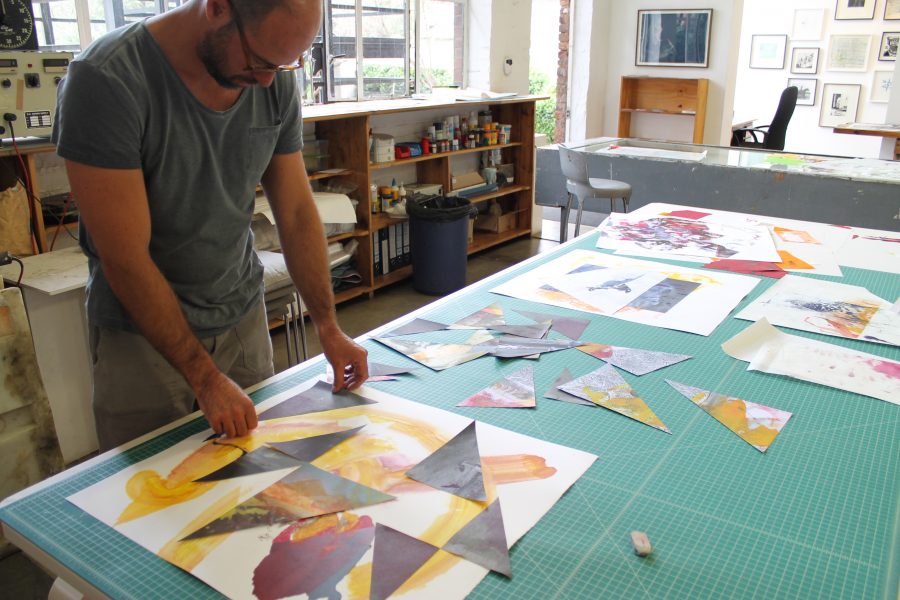17.12.15
Blogger: Jessie Cohen
Mexican born mixed media artist Luis Alonzo-Barkigia returned to Arts on Main (AOM) last week to finalize a set of watercolour monotypes which he made on a recent, off-the-beaten-track road-trip from Cape Town to Johannesburg.
This series of ten unique monotypes was made in collaboration with our AOM workshop. It exemplifies how Alonzo-Barkigia prizes feeling and happenstance above all when making art.
I caught up with the artist after his adventure to hear about the trip and to get a sense of his process behind making the monotypes in the South African wilderness. We started with the most daring part of the journey: when Alonzo-Barkigia tried his hand at the world’s highest bungy jump as a way of immersing himself in his surroundings.
JC: So how did the much-anticipated bungy jump go?
AB: It was amazing! It’s the most unusual way to absorb and interact with an environment. The experience actually summarizes the nature of my trip rather well as it was a complete combination of rush and stop.
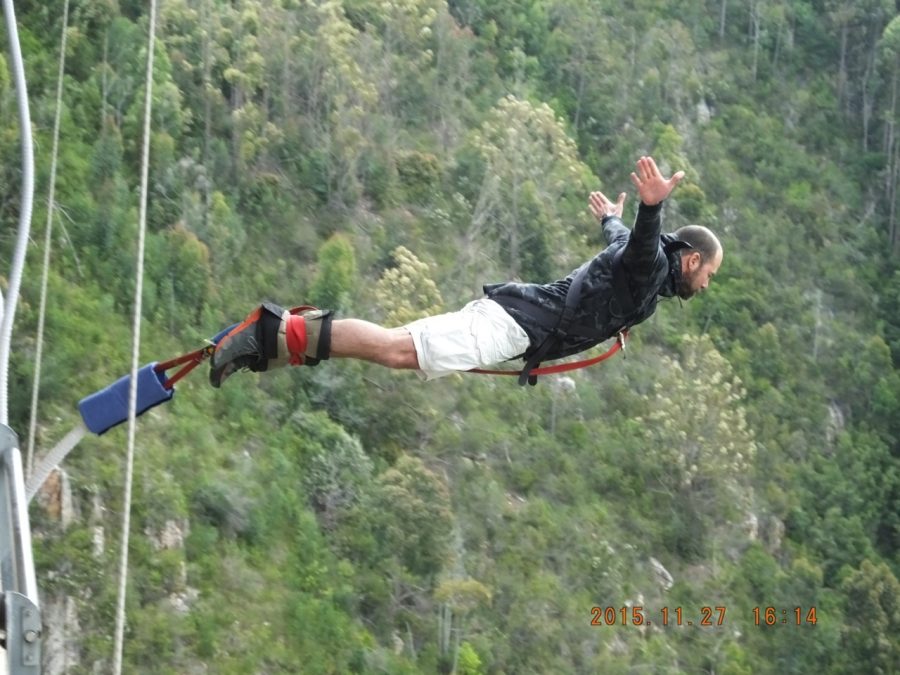
JC: What was your approach to making the plates while on the road?
AB: I did a plate a day apart from the tenth one which I made back in the workshop to title the series.
Below, Alonzo-Barkigia can be seen in the process of designing this monotype in our workshop:

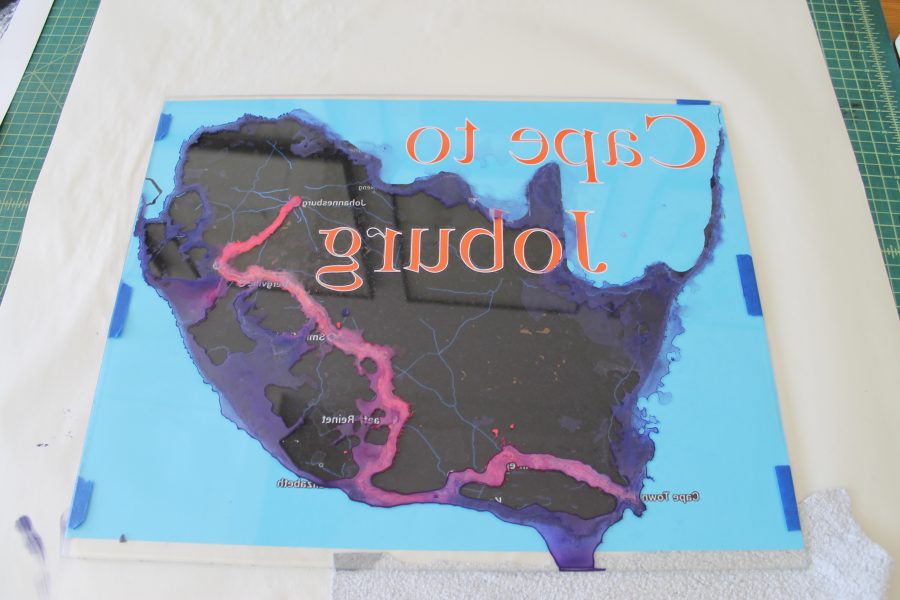
AB: For the first monotype that I made in situ, I carried a plate up Table Mountain and worked on a ridge at the top, which was quite the challenge.
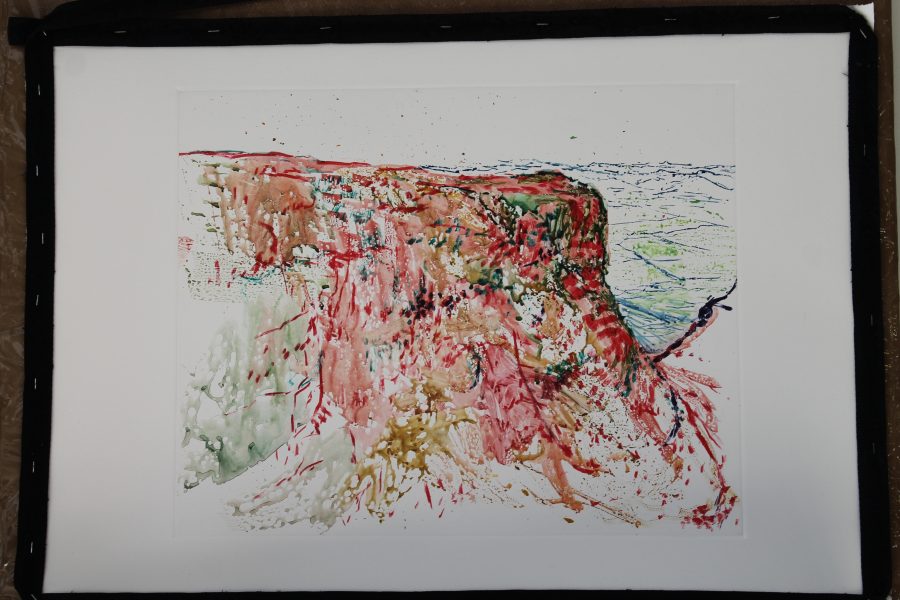
Alonzo-Barkigia described this as “a view of the east end of Table Mountain where the ridge ends and Lion’s Head begins. It was the first plate I worked on and I began to understand the complexity of doing watercolours on Perspex.”
The artist explained that he made the plates as part of a process of interacting with his environment: “I often found myself battling with the elements – be it strong winds, the African sun or issues of time and fading light. It was often difficult to find an appropriate surface to perch on, but I seemed to manage.”
Alonzo-Barkigia spoke about the challenges he faced while making each unique watercolour monotype:
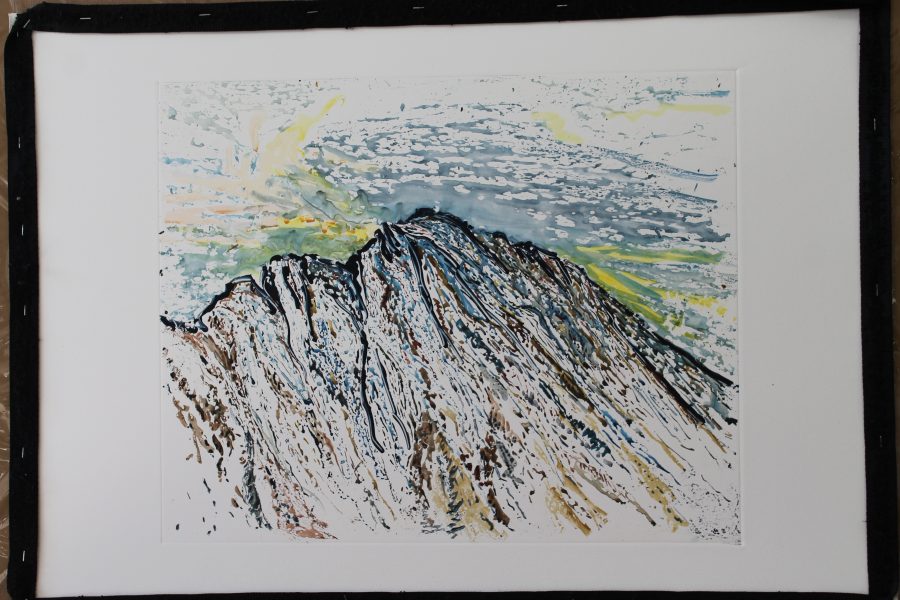
AB: Swarzberg Pass was incredibly windy and I was racing against time. Also, the plate wasn’t allowing me to apply the paint properly so I had to resolve the image through thin beading lines.
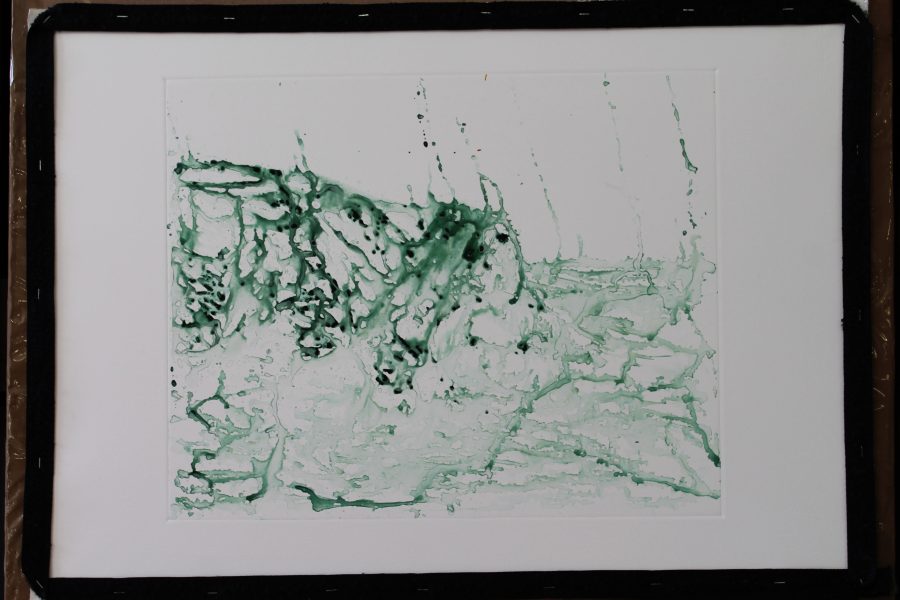
AB: My entire drive down to Knysna through the Prince Alfred Pass was soaked in rain. I could not see two metres beyond the thin rock wall that kept me from driving over the edge. The invisibility of the precipice allowed me to drive aggressively down the mountain as I was unaware of the possible fall. When I arrived at the coast, the rain was still falling, albeit drizzling lightly. I did this piece using only watercolour crayon, but after thirty minutes I could no longer work on the plate as it was saturated with water. I took it back to the car where I set it down to dry. The incline of the hill caused most of the image to run. This had a serendipitous effect, causing the monotype to look as if the ocean had crashed a wave on the entire heads.
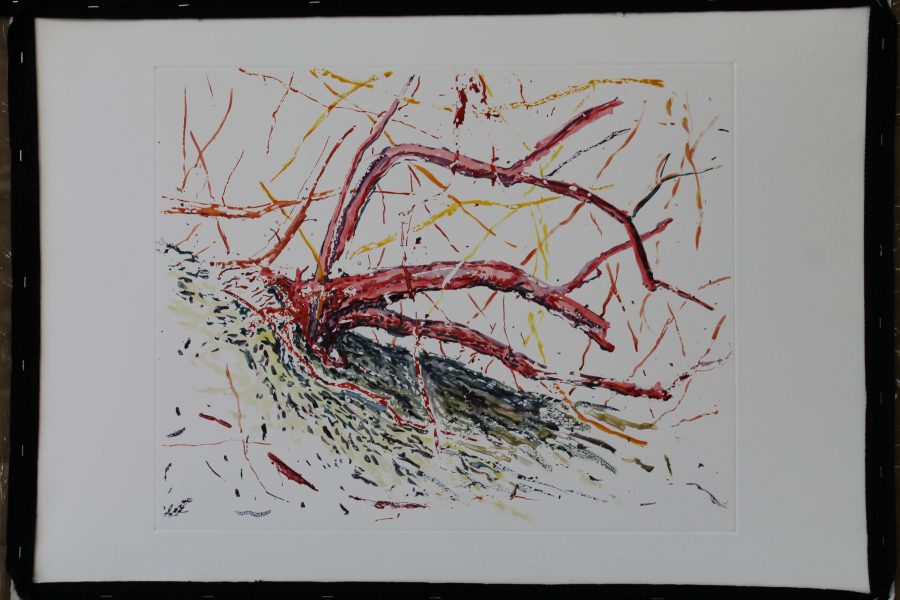
AB: During my drive down to the coast, I was intrigued by the vegetation and coastal forest. I was desperate to catch the thick foliage and vines I had seen on my drive down from the Karoo. After bungy jumping from the Blukrans bridge, I stopped at Storm River to do a plate. While I was completely caught up with the ocean scenery, I could not get the dense foliage out of my head. I stopped before reaching the mouth of the river and did this piece. It was the most generous plate – the best prepared and I was able to make most of the lines I wanted.

AB: At Port Elizabeth, I stayed with a friend who had an incredible home overlooking the bay. I was quite exhausted from all the driving and I wanted to relax, but found myself so inspired by this true artist home, so I put together a group of objects and started to draw. This image [above] is of a cherub, an artichoke and a pomegranate.
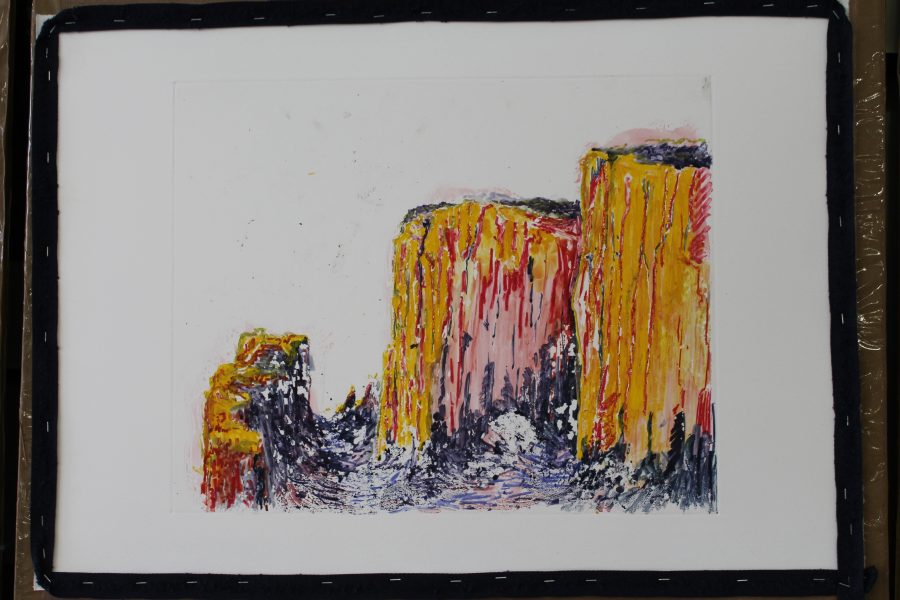
AB: The Valley of Desolation was the most difficult plate to make. I arrived late into Graaff-Reinet and had to rush to the park in order to do the work. When I got to the top of the mountain there was a tremendous wind blowing. I did several preparatory sketches but could not find an angle I liked. When I finally found my spot, I was perched on a rocky out crop several hundred metres from the ground. The wind was blowing so hard that I was constantly stopping my work to prevent things from blowing away. It was the first time I thought that I might lose a plate, or myself, to the elements!

AB: Nieu-Bethesda was an incredible place. It was the return to the Karoo and its starkness. I had recently seen some of Adolph Jentsch’s paintings in Graaf-Reinet and wanted to emulate his mark application and abstraction. Contrary to my intentions, this work turned out to be the most traditional in terms of my use of colour and representation. Initially, I was disappointed by the flaking and varying tonal intensities, but they gave the finished monotype an interesting vintage finish which I am very happy with.

AB: When I started to head up north I realized that I needed to make a plate in the Free State. It is such a dry, harsh place. I wanted to capture the weight of the empty sky. There was no cover from the sun so I lathered myself in lotion and wrapped my neck in a scarf before starting the plate. Just as I felt the plate over-heating, a large cloud appeared and gave me respite from the midday sun. While packing up my things, I accidently left the plate in the sun which caused flaking, but ended up giving the monotype a nice, unanticipated effect.

AB: The most impressive part of KZN was the sky. Massive clouds covered the horizon and I could see lightning shoot across the sky. After a hike up to the amphitheatre, the clouds displayed their fury in a magnificent display of lightning, thunder and much needed rain. I did my final plate at 5am the following morning. I wanted to give equal importance to the mountains and clouds so I outlined the escarpment by iterating only the shadows of the rocks while the sky is done in thick, broad strokes.
Alonzo-Barkigia also made some mixed media pieces in the workshop after his road trip. The following photographs are of him making the work and give a sense of his impromptu creative process, which includes gestural painting layered with collage:
It was a pleasure to host Alonzo-Barkigia in our workshop. For our master printer Jill Ross, his watercolour monotypes and mixed media pieces are especially exciting because of the “spontaneous approach he takes to making work, his visceral engagement with the environment and his use of colour”.
Prior to his trip, Alonzo-Barkigia outlined his impulsive and haphazard approach to making art, which is outlined in a previous post:

